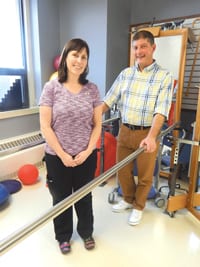Physicians Raise Their Voice on Obesity
WALTHAM — In the wake of no less than four separate national reports on the problem of obesity, the president of the Mass. Medical Society (MMS) has raised the voice of Massachusetts physicians in the struggle against what is fast becoming the nation’s number one health problem.
Dr. Mario Motta, president of the statewide physicians association, said that the recent reports showing a rapidly declining picture of obesity across the nation along with unprecedented spending on obese patients demand that more attention be given to this growing personal and public health problem.
“Six years after two U.S. surgeon generals compared obesity to cigarette smoking and labeled it as a major cause of disease and death in America,” said Motta, “obesity rates are now the highest they have ever been, and health care spending on obese patients has skyrocketed to levels never before seen.
“The impact of obesity on personal health is damaging enough, with such chronic diseases as diabetes, heart disease, and arthritis,” he added. “But the public health implications are enormous, and the associated costs to treat obesity and its complications could hinder health care reform. If obesity rates and spending run out of control, then that will certainly have an impact on health care costs and, subsequently, reform efforts.”
Motta, a cardiologist, said the MMS has been collaborating with the Mass. Department of Public Health in creating awareness about the obesity problem in the Commonwealth and what individuals, communities, and organizations can do to reverse the trends.
The two organizations and Hopkinton Community Television have produced a one-hour television special, Obesity in Massachusetts, which has been distributed to public-access television stations in communities across the state. The program, featuring physician experts in obesity, fitness, and nutrition along with Department of Public Health officials, is also available online at www.hcam.tv/
obesity.
While obesity and overweight in the Commonwealth are not as bad as in other states, they are still serious problems: the rate of adult obesity is rising faster than the national average, with now one in five residents obese. And childhood obesity is even worse: nearly 30{06cf2b9696b159f874511d23dbc893eb1ac83014175ed30550cfff22781411e5} of middle- and high-school students are overweight or obese.
The four national reports issued this month show just how severe the obesity problem has become. On July 1, the Trust for America’s Health and the Robert Wood Johnson Foundation released its 2009 F as in Fat report, showing that adult obesity rose in 23 states and didn’t decline anywhere.
One week later, the Centers for Disease Control and Prevention issued its report on obesity, saying that the nation is fatter than ever, with more than 26{06cf2b9696b159f874511d23dbc893eb1ac83014175ed30550cfff22781411e5} of the population now fully obese and two-thirds of America either obese or overweight.
The third report, from the Agency for Healthcare Research and Quality (AHRQ), showed that health care spending on obese patients over five years shot up more than 80{06cf2b9696b159f874511d23dbc893eb1ac83014175ed30550cfff22781411e5} to more than $303 billion in 2006 from $167 billion in 2001.
The rate of spending on obese patients was more than double that for those merely overweight (up 36{06cf2b9696b159f874511d23dbc893eb1ac83014175ed30550cfff22781411e5}) and more than triple that for normal-weight patients (up 25{06cf2b9696b159f874511d23dbc893eb1ac83014175ed30550cfff22781411e5}). The fourth report, published July 9 in the journal Health Affairs, showed that the cost of hospitalizing obese children between 1999 and 2005 nearly doubled, with twice as many children requiring such care.
According to the report, obesity-related hospitalizations increased 8.8{06cf2b9696b159f874511d23dbc893eb1ac83014175ed30550cfff22781411e5} per year among children 2 to 5, 10.4{06cf2b9696b159f874511d23dbc893eb1ac83014175ed30550cfff22781411e5} per year among children 6 to 11, and 11.4{06cf2b9696b159f874511d23dbc893eb1ac83014175ed30550cfff22781411e5} per year among adolescents 12-19 during those years.



Comments are closed.